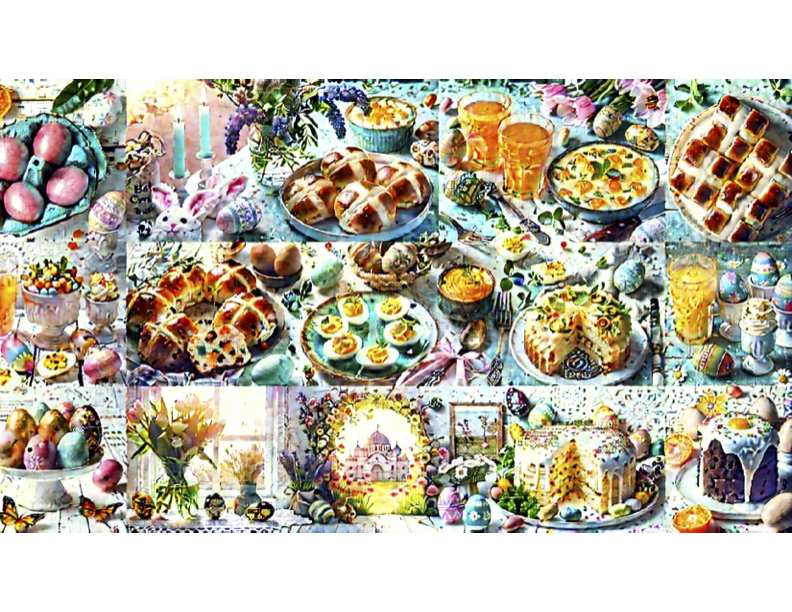Easter is more than egg hunts and chocolate bunnies. Around the world, it’s a time when families come together, and food takes center stage. From sweet breads to savory roasts, every culture has its own way of celebrating. Here’s a look at what Easter tastes like across the globe.
1. Italy – Colomba di Pasqua
Italy’s Easter table wouldn’t be complete without Colomba di Pasqua, a dove-shaped sweet bread. Similar to panettone but richer, it’s filled with candied orange peel and topped with almonds and pearl sugar. It’s a symbol of peace and a favorite alongside espresso or wine.
2. Greece – Tsoureki and Lamb
In Greece, Easter follows Orthodox traditions, with a feast after a strict Lenten fast. Tsoureki, a braided sweet bread flavored with mahleb and mastiha, is often dyed with red eggs. Roasted lamb—often cooked whole on a spit—is the main event, symbolizing Christ as the sacrificial lamb.
3. United Kingdom – Hot Cross Buns
These spiced, raisin-studded buns marked with a white cross are a Good Friday staple in the UK. Originally tied to religious symbolism, they’re now a national favorite even outside of Easter, best served toasted with butter.
4. United States – Glazed Ham and Deviled Eggs
In the U.S., Easter dinner leans toward glazed ham, often cooked with honey, brown sugar, or pineapple. Deviled eggs are also a staple, especially since many families have leftover hard-boiled eggs from decorating.
5. Spain – Torrijas
Spain celebrates with torrijas, a type of French toast soaked in milk or wine, dipped in egg, and fried, then sprinkled with cinnamon and sugar. It's a sweet, humble dish rooted in using up old bread, now a beloved Easter dessert.
6. Poland – Święconka Basket and Biała Kiełbasa
In Poland, families bring baskets of symbolic foods—eggs, bread, sausage, salt—to church for blessing. Easter Sunday usually includes biała kiełbasa (white sausage), hard-boiled eggs, and a rye soup called żurek.
7. Mexico – Capirotada
Holy Week in Mexico features capirotada, a spiced bread pudding layered with cheese, raisins, nuts, and soaked in a piloncillo (unrefined sugar) syrup. It reflects both European and Indigenous influences and is rich in symbolism.
8. Ethiopia – Doro Wat and Injera
Ethiopian Orthodox Christians break their fast with doro wat, a spicy chicken stew with hard-boiled eggs, served over injera, a sour flatbread. The dish is hearty, deeply spiced, and often shared communally.
9. Russia – Kulich and Paskha
In Russia, Easter is celebrated with kulich, a tall, cylindrical sweet bread, and paskha, a creamy dessert made from cheese, dried fruit, and nuts, molded in the shape of a pyramid with religious symbols.
10. Sweden – Påskbord
Sweden’s Easter påskbord (Easter buffet) includes pickled herring, cured salmon, eggs with roe, and lamb. It’s festive but rooted in simplicity—reflecting a blend of Christian and pagan spring traditions.
Final Bite
Easter food traditions vary wildly, but they all share one thing: a sense of meaning. Whether it’s tied to faith, family, or seasonal change, these dishes connect people across generations. No matter where you are, Easter is a time to sit down, share a meal, and celebrate life.
Want to try something new this Easter? Pick a dish from another country and make it part of your celebration. Food is the easiest passport you’ll ever need.

